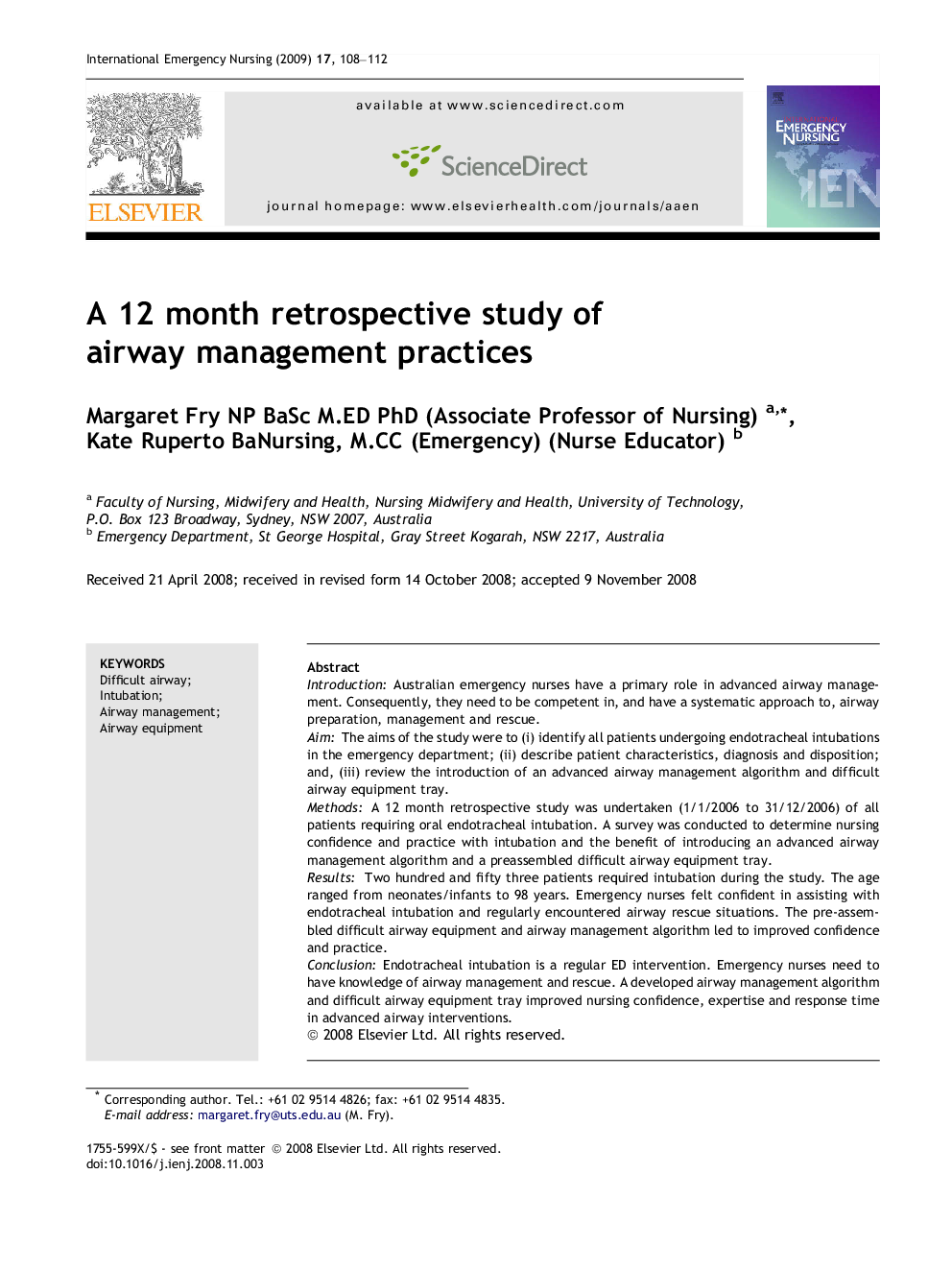| Article ID | Journal | Published Year | Pages | File Type |
|---|---|---|---|---|
| 2608321 | International Emergency Nursing | 2009 | 5 Pages |
IntroductionAustralian emergency nurses have a primary role in advanced airway management. Consequently, they need to be competent in, and have a systematic approach to, airway preparation, management and rescue.AimThe aims of the study were to (i) identify all patients undergoing endotracheal intubations in the emergency department; (ii) describe patient characteristics, diagnosis and disposition; and, (iii) review the introduction of an advanced airway management algorithm and difficult airway equipment tray.MethodsA 12 month retrospective study was undertaken (1/1/2006 to 31/12/2006) of all patients requiring oral endotracheal intubation. A survey was conducted to determine nursing confidence and practice with intubation and the benefit of introducing an advanced airway management algorithm and a preassembled difficult airway equipment tray.ResultsTwo hundred and fifty three patients required intubation during the study. The age ranged from neonates/infants to 98 years. Emergency nurses felt confident in assisting with endotracheal intubation and regularly encountered airway rescue situations. The pre-assembled difficult airway equipment and airway management algorithm led to improved confidence and practice.ConclusionEndotracheal intubation is a regular ED intervention. Emergency nurses need to have knowledge of airway management and rescue. A developed airway management algorithm and difficult airway equipment tray improved nursing confidence, expertise and response time in advanced airway interventions.
